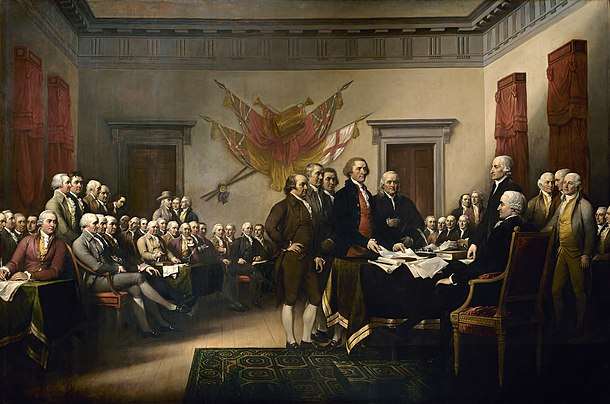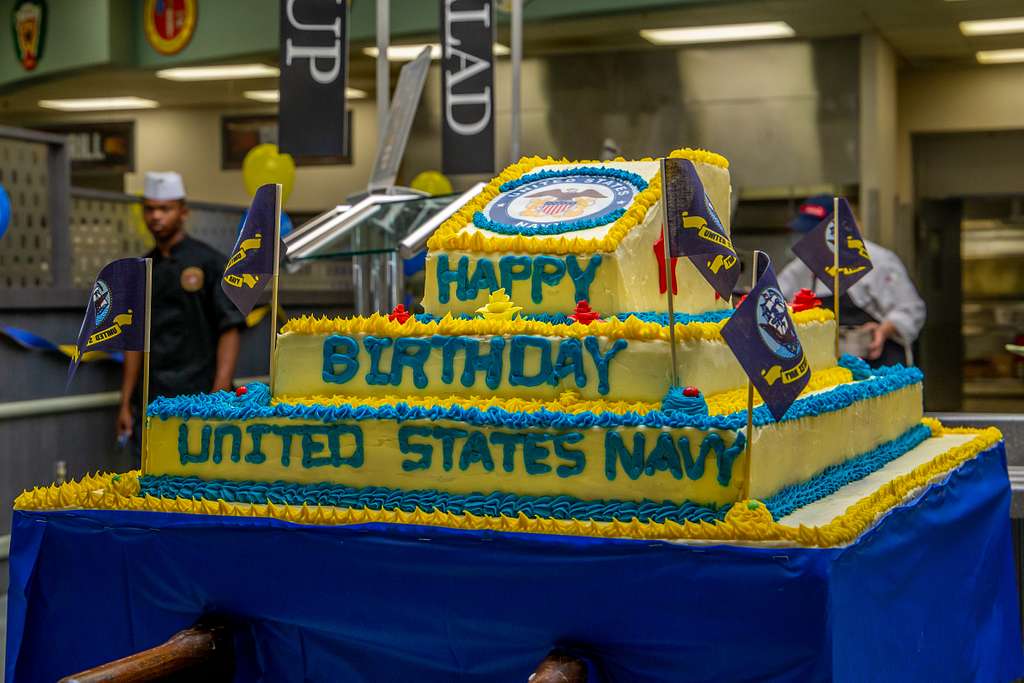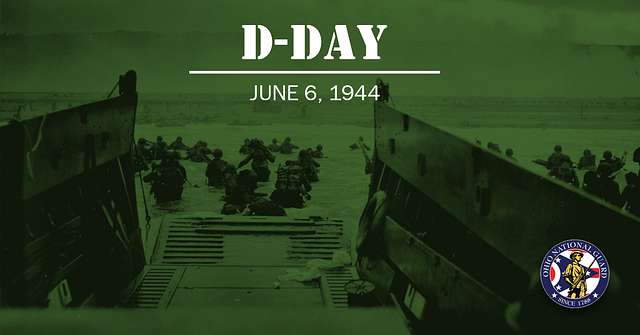
It’s perhaps the single best-known day in American military history. D-Day has lived in the annals of American military lore ever since it occurred, standing as a testament to the determination, ingenuity, and guts of the US and its allies. Now, 78 years after June 6th, 1944, we still observe the anniversary of D-Day and its impact not only on the invasion of France but the entire Western front in the Second World War.
Prelude to D-Day
In 1944, things weren’t looking so good for the Axis. The Soviets had annihilated the German 6th Army at Stalingrad and followed their victory with an overwhelming counter-attack. However, the Germans were still holding in tenaciously, making the Soviets pay dearly for each mile they gained.
Soviet dictator Joseph Stalin had repeatedly asked the Western Allies to open a second front in Europe. They finally acquiesced and began planning on how to open other European fronts to drain German manpower away from the battle in Eastern Europe.
Operation Overlord: Deceptions
While most media portrayals of D-Day focus mainly on the events of the amphibious landing itself, the majority of the heavy lifting was done in the planning process. Planning for D-Day began after the Allies settled on a cross-channel invasion of France at the Trident Conference in 1943. Dwight Eisenhower, the Supreme Commander of Allied Troops in Europe, knew he had his work cut out for him.
While an amphibious assault would be difficult, it wasn’t totally unheard of. The Allies had been performing amphibious landings before D-Day, notably in Sicily and during the Battle of Anzio in central Italy. They’d learned some costly lessons – especially at Anzio – about how to conduct an operation with so many logistical and real-world obstacles.
One of the most miraculous aspects of D-Day was its secrecy. The Allies knew that they needed to keep their plans hidden from the Germans. If the Nazis learned about the plan, they’d be able to dig in even deeper into the continental castle of the Atlantic Wall fortifications.
The Allies really went for broke here. For one, they drummed up fake radio traffic to convince the Germans they were planning to land on the coast of Norway. They even constructed a fake army, the First United States Army Group, commanded by none other than the legendary George Patton. They even had Patton on-site in England to really sell the plot.
D-Day Units and Map
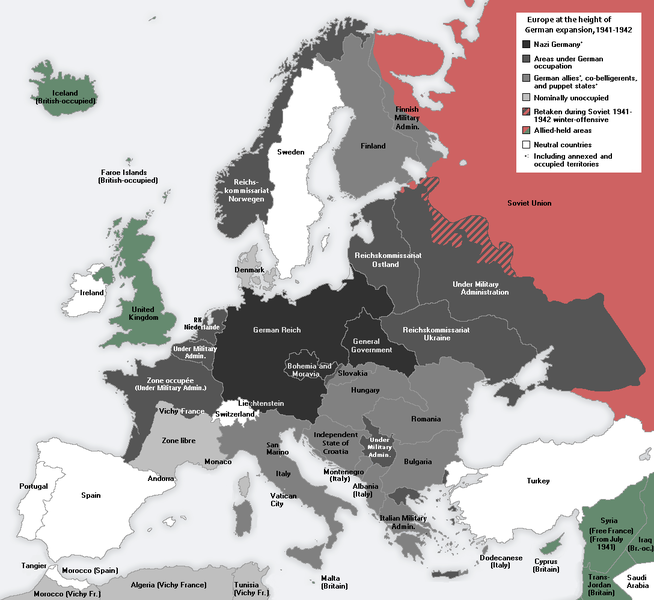
The Situation in Europe in the Months Before D-Day. Photo courtesy of Morgan Hauser.
Ultimately, five US Army divisions took part in D-Day operations: the 1st Infantry, 4th Infantry, 29th Infantry, 82nd Airborne, and 101st Airborne. Additionally, numerous non-divisional units took part in the battle, including anti-aircraft batteries, amphibious trucks, engineers, tank battalions, and a slew of other personnel. All told, nearly 350,000 soldiers and naval personnel took part in the invasion.
Planners divided the Normandy beaches into five different command zones: Utah, Omaha, Gold, Juno, and Sword. The American zone included Utah and Omaha beaches under the command of Lieutenant General Omar Bradley. Meanwhile, the British handled Gold and Sword, while the Canadians took care of Juno.
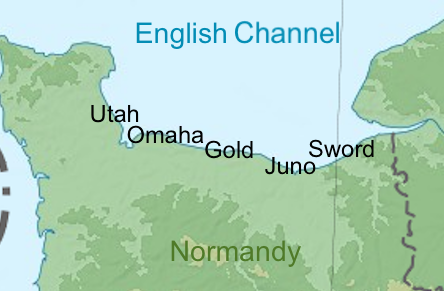
Map of the D-Day Beaches at Normandy. Photo courtesy of Soerfm.
Operation Overlord: The Battle
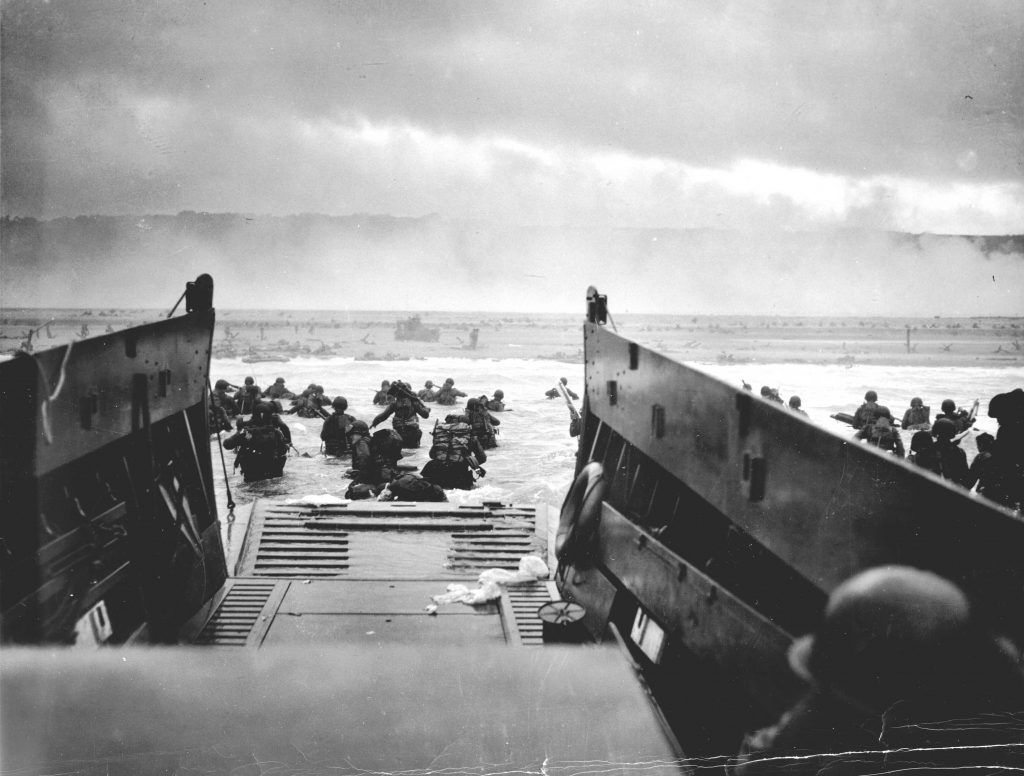
Perhaps the Most Iconic Photo of D-Day.
Early Airborne Operations
The action in Operation Overlord actually began before the planned landings. American and British airborne soldiers parachuted out of planes under the cover of night in the wee hours of the morning on June 6th. After landing, they secured strategically important sites like bridges and road junctions. In many cases, paratroopers made contact with French Resistance cells to bolster their numbers.
Bombardment and Landings
Next, a massive bombardment from planes and naval guns descended on the beaches of Normandy. These were intended to soften up the deeply-entrenched German defenses. The bombardment was fairly unsuccessful at Omaha Beach thanks to low cloud cover that reduced visibility.
That’s what made Omaha Beach such a bloody battlefield. To make matters worse, Omaha was also the most heavily fortified of all the landing zones. As a result, the men landing at Omaha Beach took between 2,000 and 5,000 casualties.
To put that in perspective, forces at Gold and Sword Beaches (the next most bloody after Omaha) only experienced about 1,000 casualties each. Total Allied casualties for D-Day topped 10,000 with nearly 4,500 dead.
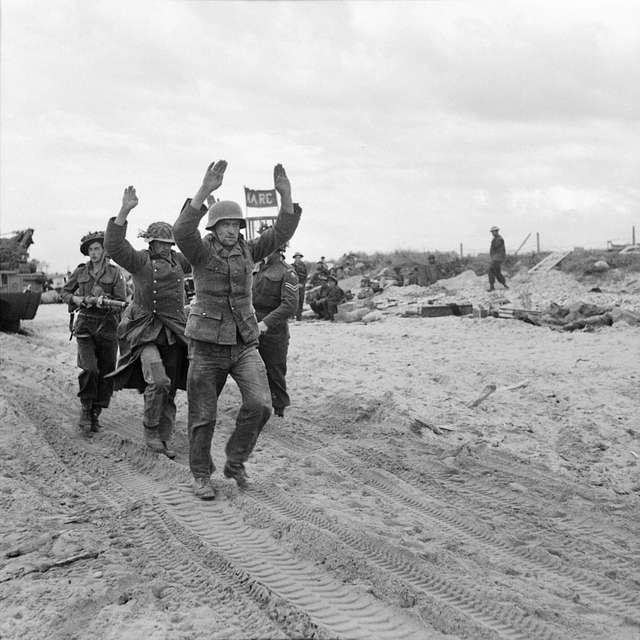
British Soldiers Escorting German POWs After Their Surrender.
Aftermath
In spite of stiff resistance, the Allies had decisively taken the Normandy beaches by nightfall. Over the next six days, they’d continue beating back the German war machine and connect each of the beachheads. They’d succeeded in pulling off the largest amphibious assault in history, a feat that hasn’t been matched to this day.
Almost 160,000 soldiers landed in Normandy on D-Day. By June 30th, 875,000 men would pass over the beach on their way to combat in Western Europe. Nearly a year later, the jig would be up for the Nazis as the Allies would occupy Berlin.
D-Day Memorial
One of the factors that has played into D-Day’s enduring legacy is the D-Day Memorial in Normandy. While we have our own D-Day Memorial in Virginia, it doesn’t hit as hard as its French counterpart. The monument consists mainly of a cemetery that covers 172 square acres of land and contains the remains of nearly 10,000 soldiers.
I personally visited the monument in sixth grade. I was in a group of other kids my age, and I’m not exaggerating when I say that multiple children cried the entire time we were there. The memory has stuck with me over the last 22 years, and I’m sure that it’s something I’ll never forget.
Helping Veterans Find Their Future
Veterans returning home from the battlefields of Europe often had a difficult time reintegrating into civilian life. And that’s only become more true as years pass. Thanks to the diligent work of our Military & Veteran Services team, SDI is able to support our active duty and veteran students as they seek their education. To learn more about the ways we are able to assist our military students, click here.

